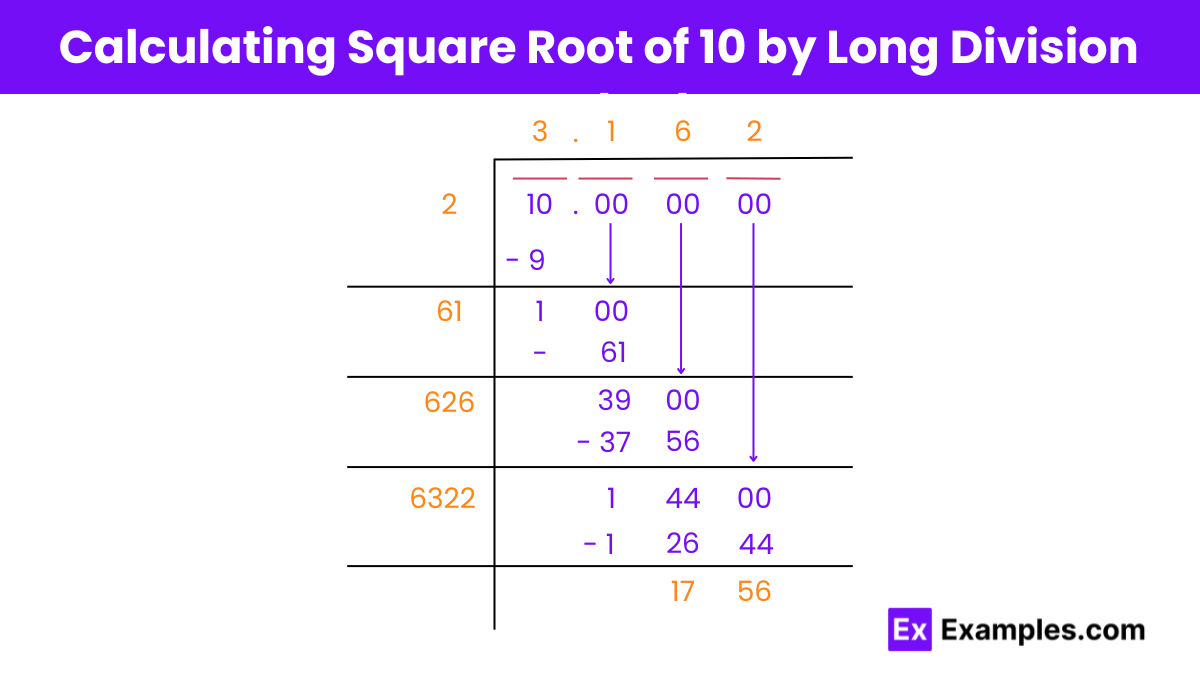What is the square of 10?
100
50
20
10

The square of 10 is the result of multiplying 10 by itself, denoted as 10^2 or 10 * 10. The prefix “square” indicates that the number is multiplied by itself, while the suffix “of” specifies the number being squared, in this case, 10. Therefore, the square of 10 is 100.
The square root of 10 is an important mathematical concept, representing the value that, when multiplied by itself, equals 10. This value lies between 3 and 4, as 3^2 equals 9 and 4^2 equals 16. However, it is not a whole number, nor can it be expressed as a simple fraction. Instead, it is an irrational number, meaning its decimal representation goes on indefinitely without repeating. The approximate value of the square root of 10 is approximately 3.16227766017.
The square root of 10 is an irrational number.
The square root of 10 is an irrational number. It cannot be expressed as a simple fraction of two integers. When we calculate the square root of 10, we find that its decimal representation is non-repeating and non-terminating. This characteristic distinguishes irrational numbers from rational numbers, which can be expressed as fractions. The square root of 10 falls into the category of irrational numbers because it cannot be written in the form a/b where a and b are integers and b is not zero. Therefore, the square root of 10 is classified as an irrational number due to its unique decimal representation.
Finding the exact value of the square root of 10 (√10) is challenging due to its irrational nature, meaning its digits continue infinitely without repeating. However, several methods can approximate its value with increasing accuracy:

By following this method, we find that the square root of 10 is approximately 3.162. This approach provides a systematic way to approximate square roots using long division.
Yes, √10 is a real number.The square root of 10 (√10) is a real number because it represents a valid solution on the real number line.
Yes, 10 is an integer. An integer is a whole number that can be positive, negative, or zero, and 10 falls under the category of positive integers because it is a whole number greater than zero.
The square root of 10 is between 3 and 4. It is approximately 3.16227766017. This irrational number falls between the perfect squares of 3 (which is 9) and 4 (which is 16), showing that its value lies between those two integers on the number line.
Text prompt
Add Tone
10 Examples of Public speaking
20 Examples of Gas lighting
What is the square of 10?
100
50
20
10
What is the square root of 100?
5
10
15
20
If a number squared equals 100, what is the number?
10
20
30
40
Which number, when squared, gives 10?
√10
10
100
1
What is the result of squaring √10?
10
20
30
40
What is the value of 10²?
10
20
30
100
What is the result of √100 + √25?
15
20
25
30
If x² = 10, what is x?
√10
10
1
100
What is the square of √10?
√10
100
10
1
What is the result of (√10)²?
10
100
1
20
Before you leave, take our quick quiz to enhance your learning!

